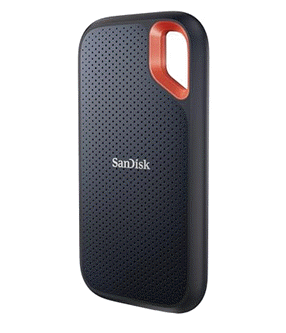Mayura Kathir
2025-09-03 00:39:00
gbhackers.com
A sophisticated malware operation that combines multiple attack vectors to steal cryptocurrency and deliver additional malicious payloads to Windows systems.
A recently discovered TinyLoader malware campaign is actively targeting Windows users through a multi-pronged attack strategy involving network share exploitation, USB propagation, and deceptive shortcut files.
The malware, which serves as a delivery mechanism for other dangerous threats including Redline Stealer and DCRat, represents a significant evolution in cryptocurrency theft operations.

Security researchers investigating suspicious activity from IP address 176.46.152.47 uncovered what initially appeared to be a single malicious host but turned out to be part of a broader international infrastructure.
The command and control network spans servers across Latvia, the United Kingdom, and the Netherlands, all hosted by Virtualine Technologies.
The investigation revealed active TinyLoader panels at multiple IP addresses, with attackers using distinctive HTML signatures like “Login – TinyLoader” to manage their criminal operations.
These panels serve as central hubs where cybercriminals monitor infected computers, track stolen cryptocurrency, and coordinate malware distribution.
Multi-Vector Attack Strategy
TinyLoader employs several sophisticated propagation methods to maximize infection rates and maintain persistence on targeted systems.
This clean, functional panel design is typical of modern malware-as-a-service operations, where threat actors prioritize usability to efficiently manage their stolen data and coordinate botnet activities.

The malware creates convincing desktop shortcuts labeled “Documents Backup.lnk” with official Windows icons and descriptions like “Double-click to view contents” to trick users into executing malicious code.
For network-based attacks, the malware scans local networks for accessible shared folders and drives.
Using existing system permissions, it copies itself to network shares as “Update.exe,” potentially spreading throughout entire corporate networks.
This lateral movement capability makes TinyLoader particularly dangerous in enterprise environments where shared resources are common.
The malware also targets removable media devices. Every time a USB drive is connected, TinyLoader copies itself multiple times with enticing names like “Photo.jpg.exe” and “Document.pdf.exe”.
It creates autorun files that automatically launch the malware when the infected USB device is plugged into another computer, turning innocent storage devices into infection vectors.
Once installed, TinyLoader employs multiple techniques to maintain long-term access to infected systems.
The malware creates hidden copies of itself across various directories, including Desktop and Documents folders, with each copy marked as hidden to avoid detection during normal browsing.
In cases where the malware gains administrator privileges, it performs a particularly insidious registry modification.
By hijacking Windows file associations for text files, TinyLoader ensures it runs every time a user opens any .txt file. This technique blends persistence into routine user actions, making detection extremely difficult.
Cryptocurrency Theft Operations
The malware’s most dangerous capability involves real-time clipboard monitoring for cryptocurrency theft.
The two Riga IPs are consecutive numbers, which means they’re probably from the same server block. Combined with the C2 traffic we detected and the open directories we found, it’s clear this is a well-organized operation.

A hidden background process continuously monitors clipboard activity, checking four times per second for changes while using minimal system resources to avoid detection.
When users copy cryptocurrency addresses for Bitcoin, Ethereum, Litecoin, or TRON, the malware instantly validates the format and replaces legitimate addresses with attacker-controlled wallets.
This replacement happens faster than users can notice, making transactions appear legitimate while redirecting funds to criminal accounts.
The malware uses Windows APIs to safely extract clipboard content with built-in safeguards to prevent crashes or conflicts with other applications.
This ensures the theft process remains invisible and error-free while maximizing the chances of successful cryptocurrency interception.
Beyond its primary theft capabilities, TinyLoader functions as a delivery mechanism for additional malware families.
Upon execution, it contacts six predefined attacker-controlled URLs to download secondary payloads including files named “bot.exe” and “zx.exe,” which are saved to the system’s temporary directory and executed immediately.

These payloads often include DCRat, a remote access trojan that provides attackers with comprehensive system control capabilities including keylogging, screen capture, and file theft.
The combination transforms infected systems into multi-purpose attack platforms capable of running several malicious tools simultaneously.
Mitigations
Organizations can protect against TinyLoader infections by implementing several defensive measures.
Network monitoring should include searches for the HTML signature “Login – TinyLoader” to identify related infrastructure, while security teams should block known malicious IP addresses including 176.46.152.47, 176.46.152.46, and 107.150.0.155.
USB device restrictions and comprehensive scanning policies can prevent lateral movement through removable media.
Security teams should monitor for suspicious files like “Update.exe” appearing on network shares and establish alerts for multiple executables being created in user directories.
Individual users should verify cryptocurrency wallet addresses before confirming transactions and remain suspicious of desktop shortcuts claiming to be backup or utility tools.
Regular scanning of USB drives before opening files, particularly executables disguised as documents with double extensions, provides additional protection against infection.
The TinyLoader operation represents the evolving nature of modern cybercrime, where attackers combine multiple techniques into comprehensive attack platforms.
The malware’s ability to spread through network shares, USB devices, and social engineering while maintaining persistent access and stealing cryptocurrency demonstrates the sophisticated threat landscape facing organizations and individuals.
Security researchers emphasize that this discovery provides valuable intelligence for blocking similar operations and protecting against cryptocurrency theft attacks.
The coordinated nature of the infrastructure, spanning multiple countries while using consistent hosting providers, suggests well-organized criminal operations that require equally coordinated defensive responses.
As cryptocurrency adoption continues growing, attacks like TinyLoader highlight the critical importance of maintaining robust cybersecurity practices and remaining vigilant against increasingly sophisticated malware operations designed to steal digital assets and compromise system security.
TinyLoader IOCs
| IP Address | City | Country | ASN |
|---|---|---|---|
| 107.150.0.155 | London | GB | AS214943 |
| 176.46.152.47 | Riga | LV | AS214351 |
| 77.90.153.62 | Kerkrade | NL | AS214943 |
| 176.46.152.46 | Riga | LV | AS214351 |
| File Name | File Size | Malware Family | Description |
|---|---|---|---|
| injector.exe.DcRat | 98 KB | DCRat | Main payload injector component |
| c.exe.DcRat | 49 KB | DCRat | Configuration or communication module |
| index.php.DcRat | 16 B | DCRat | Web-based C2 communication script |
| svchost.exe.DcRat | 65 KB | DCRat | Masquerades as legitimate Windows service |
Find this Story Interesting! Follow us on LinkedIn and X to Get More Instant Updates.
Keep your files stored safely and securely with the SanDisk 2TB Extreme Portable SSD. With over 69,505 ratings and an impressive 4.6 out of 5 stars, this product has been purchased over 8K+ times in the past month. At only $129.99, this Amazon’s Choice product is a must-have for secure file storage.
Help keep private content private with the included password protection featuring 256-bit AES hardware encryption. Order now for just $129.99 on Amazon!
Help Power Techcratic’s Future – Scan To Support
If Techcratic’s content and insights have helped you, consider giving back by supporting the platform with crypto. Every contribution makes a difference, whether it’s for high-quality content, server maintenance, or future updates. Techcratic is constantly evolving, and your support helps drive that progress.
As a solo operator who wears all the hats, creating content, managing the tech, and running the site, your support allows me to stay focused on delivering valuable resources. Your support keeps everything running smoothly and enables me to continue creating the content you love. I’m deeply grateful for your support, it truly means the world to me! Thank you!
|
BITCOIN
bc1qlszw7elx2qahjwvaryh0tkgg8y68enw30gpvge Scan the QR code with your crypto wallet app |
|
DOGECOIN
D64GwvvYQxFXYyan3oQCrmWfidf6T3JpBA Scan the QR code with your crypto wallet app |
|
ETHEREUM
0xe9BC980DF3d985730dA827996B43E4A62CCBAA7a Scan the QR code with your crypto wallet app |
Please read the Privacy and Security Disclaimer on how Techcratic handles your support.
Disclaimer: As an Amazon Associate, Techcratic may earn from qualifying purchases.



















































![[01_Odyssey] Generative art Exhibition – Dark Room Experience](https://techcratic.com/wp-content/uploads/2025/09/1756818266_maxresdefault-360x180.jpg)





























![All New Conspiracy Theory Iceberg [Layer 2]](https://techcratic.com/wp-content/uploads/2025/09/1756881454_maxresdefault-360x180.jpg)























